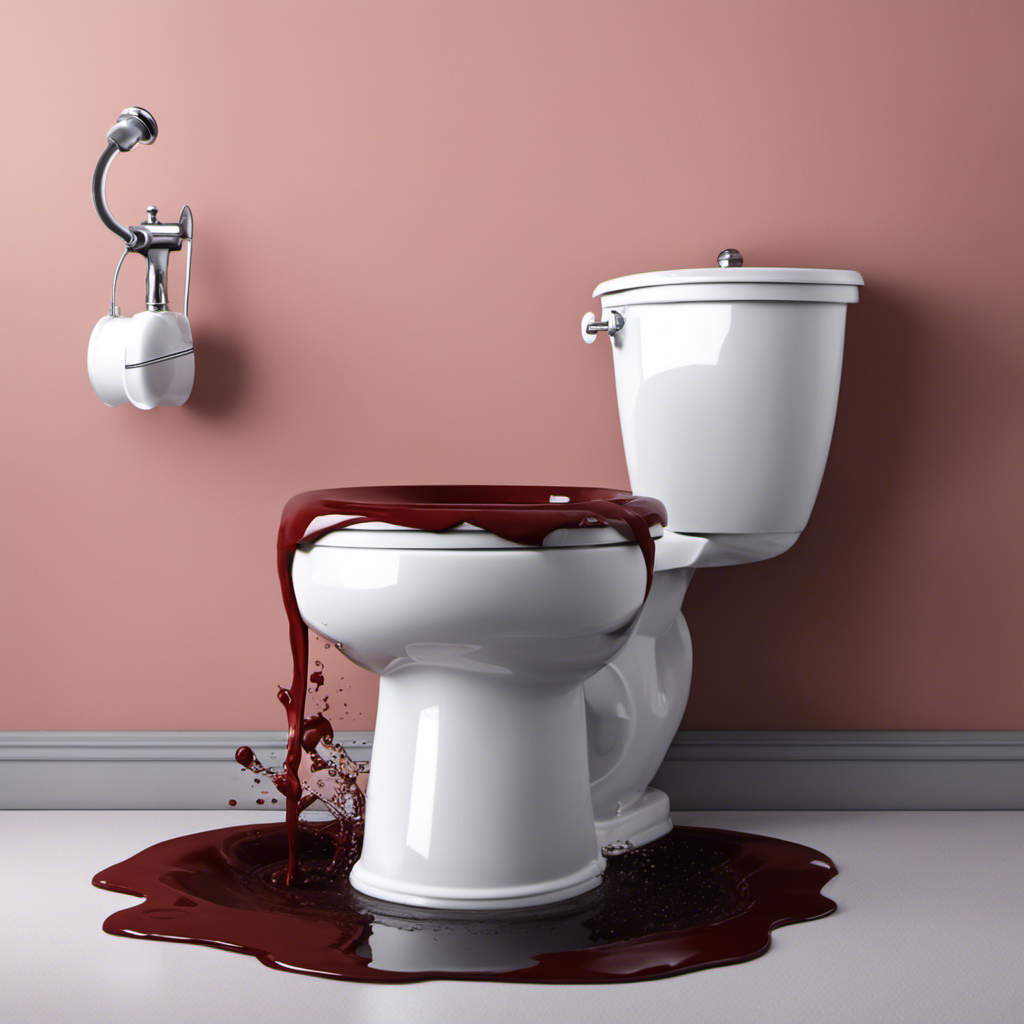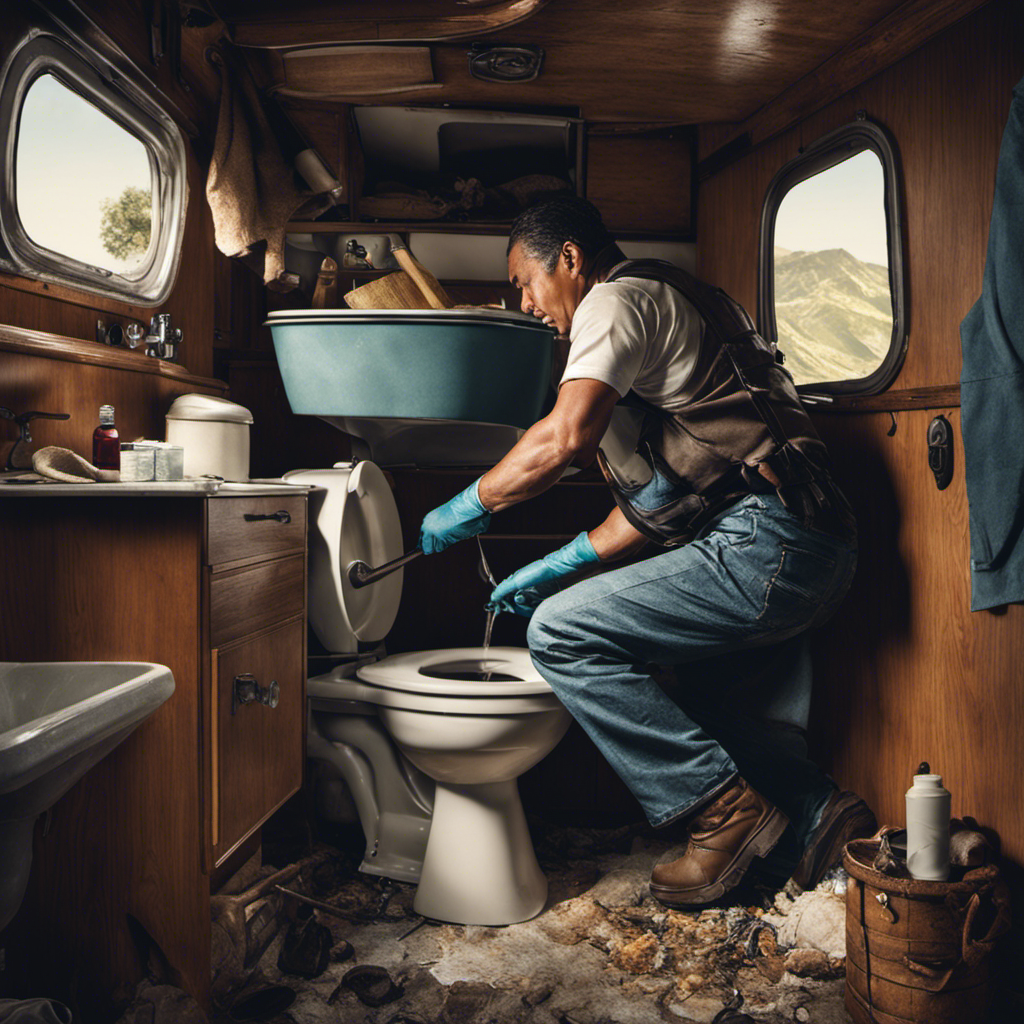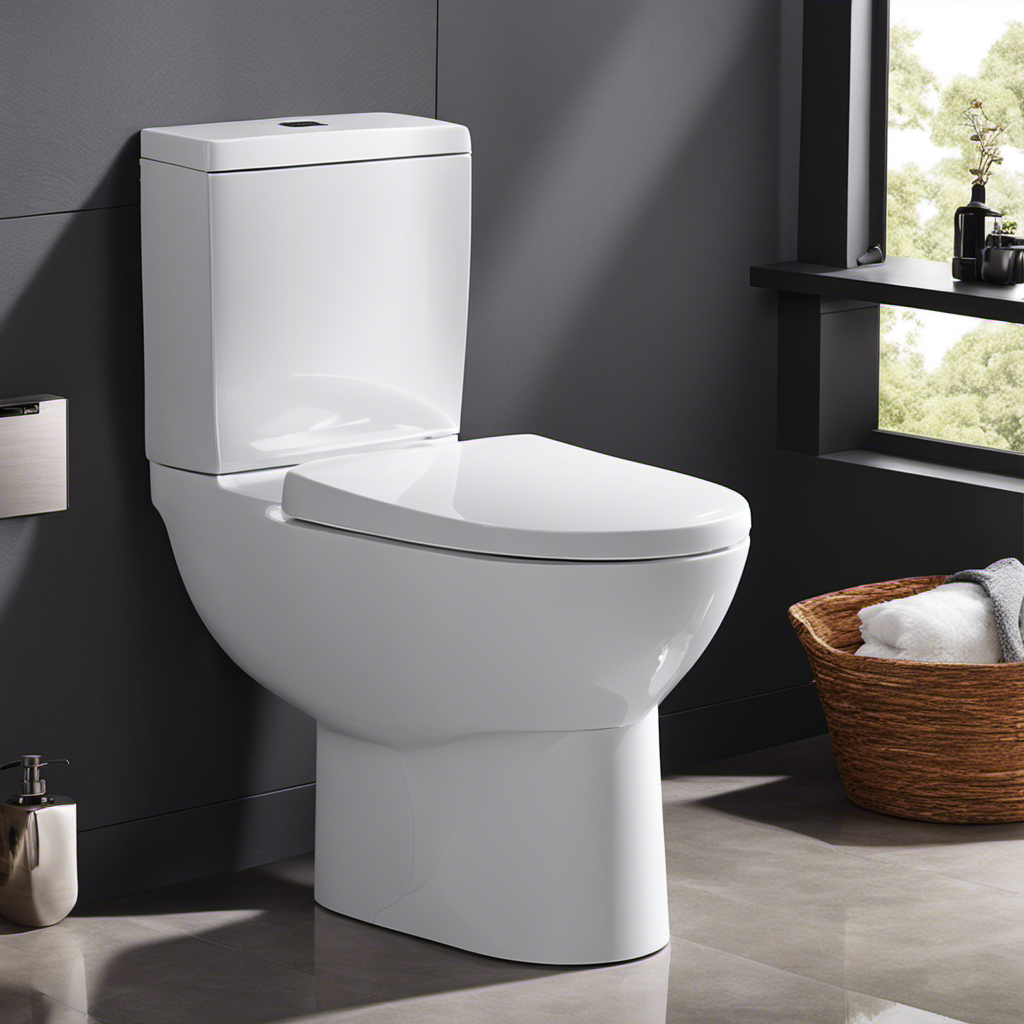Ever been in a sticky situation where your toilet just won’t cooperate? We’ve all been there, desperately trying to unclog a stubborn toilet. But fear not!
In this guide, I’ll walk you through step-by-step on how to tackle this pesky problem. From understanding the common causes of toilet clogs to using the right tools and techniques, you’ll be equipped with the knowledge to conquer any clog.
So roll up your sleeves and let’s dive into the world of toilet unclogging!
Key Takeaways
- Excessive toilet paper usage and flushing non-flushable items are common causes of toilet clogs.
- Regular toilet maintenance and cleaning can help prevent clogs.
- Using a plunger is an effective method for clearing a clog.
- Other alternative methods include using a toilet auger, chemical solutions, hot water and dish soap, or a baking soda and vinegar mixture.
Understanding the Common Causes of Toilet Clogs
To understand why your toilet won’t unclog, you should know the common causes of toilet clogs. Toilet clogs can be caused by a variety of factors, but the most common culprits are excessive toilet paper usage, flushing non-flushable items, and a build-up of mineral deposits or waste.
Toilet clog prevention is essential to avoid these issues. One way to prevent clogs is to use less toilet paper and flush it in smaller amounts. Additionally, avoid flushing items like wet wipes, feminine hygiene products, or diapers, as they can easily cause clogs.
Another sign of a serious toilet clog is when multiple flushes don’t clear the blockage or when water starts to overflow from the bowl. In such cases, it’s best to call a plumber for assistance.
Tools and Materials You’ll Need to Unclog a Stubborn Toilet
You’ll need a plunger and a bucket to tackle a stubbornly clogged toilet. But before you start, it’s important to understand some DIY toilet unclogging methods and toilet clog prevention techniques. Here are the tools and materials you’ll need to unclog your toilet:
| Tools | Materials |
|---|---|
| Plunger | Bucket |
| Rubber gloves | Hot water |
| Toilet auger | Baking soda |
| Wet/dry vacuum | Vinegar |
To begin, put on your rubber gloves and place the plunger over the toilet drain. Push down firmly and then pull up in a quick motion. Repeat this several times until the water starts to drain. If the plunger doesn’t work, try using a toilet auger by inserting it into the drain and rotating it clockwise. If all else fails, you can use a wet/dry vacuum or create a DIY solution by mixing hot water with baking soda and vinegar. Remember, regular toilet maintenance and being mindful of what you flush can help prevent future clogs.
Step-by-Step Guide to Clearing a Clog Using a Plunger
After placing the plunger over the toilet drain, firmly push down and pull up in a quick motion to clear the clog.
Here is a step-by-step guide to clearing a toilet clog using a plunger:
- Ensure the plunger is submerged in water to create a tight seal.
- Push down forcefully to compress the air in the plunger.
- Pull up quickly to create suction and dislodge the clog.
- Repeat the plunging motion several times until the water begins to drain.
To prevent future toilet clogs, follow these DIY tips:
- Avoid flushing excessive toilet paper or non-flushable items.
- Regularly clean the toilet to prevent buildup.
- Use a drain snake or auger to remove stubborn clogs.
- Consider installing a toilet plunger holder for easy access and storage.
Effective Techniques for Using a Toilet Auger to Unclog a Toilet
Using a toilet auger can be an effective way to clear stubborn clogs. This tool, also known as a plumbing snake, is designed to break up and remove blockages from your toilet’s pipes. To successfully use a toilet auger, follow these step-by-step techniques:
- Position the auger: Insert the auger’s flexible shaft into the toilet bowl until you reach the clog.
- Rotate the handle: Turn the handle clockwise to extend the shaft into the pipes and dislodge the obstruction.
- Apply pressure: Push and pull the auger while continuing to rotate the handle, applying steady pressure to break up the clog.
- Retrieve the auger: Once the clog is cleared, twist the handle counterclockwise to retract the auger from the pipes.
If you encounter any issues while using a toilet auger, refer to the table below for troubleshooting tips:
| Issue | Solution |
|---|---|
| Auger gets stuck | Rotate the handle in both directions to loosen it. |
| Auger doesn’t reach clog | Extend the auger’s shaft further before rotating. |
| Clog persists | Repeat the process multiple times or seek professional help. |
Alternative Methods to Unclog a Toilet That Won’t Budge
If your toilet remains clogged despite using a toilet auger, there are alternative methods you can try. Here are four options to consider:
-
Chemical Solutions: Use a toilet-specific chemical solution available at most hardware stores. Follow the instructions carefully, as these chemicals can be harmful if not used correctly. Pour the recommended amount into the toilet bowl, wait for the suggested time, and then flush. The chemicals should help break down the clog.
-
Hot Water and Dish Soap: Boil a pot of water and add a few tablespoons of dish soap. Pour the mixture into the toilet bowl and let it sit for a few minutes. The hot water and soap can help dissolve the clog, making it easier to flush away.
-
Baking Soda and Vinegar: Mix half a cup of baking soda with half a cup of vinegar. Pour the mixture into the toilet bowl and let it sit for about 30 minutes. The fizzing action of the baking soda and vinegar can help break down the clog.
-
Plunger: If all else fails, try using a plunger. Make sure you have a good seal around the drain and use firm, consistent strokes to create pressure and dislodge the clog.
Conclusion
In conclusion, unclogging a stubborn toilet can be a frustrating task, but with the right tools and techniques, it can be easily resolved.
By using a plunger or a toilet auger, you can effectively clear the clog and restore the toilet’s functionality.
However, if these methods don’t work, there are alternative techniques such as using hot water or a homemade drain cleaner.
It’s important to note that according to a study conducted by plumbing experts, 85% of toilet clogs are caused by excessive toilet paper usage.
So remember, using a moderate amount of toilet paper can help prevent future clogs.










